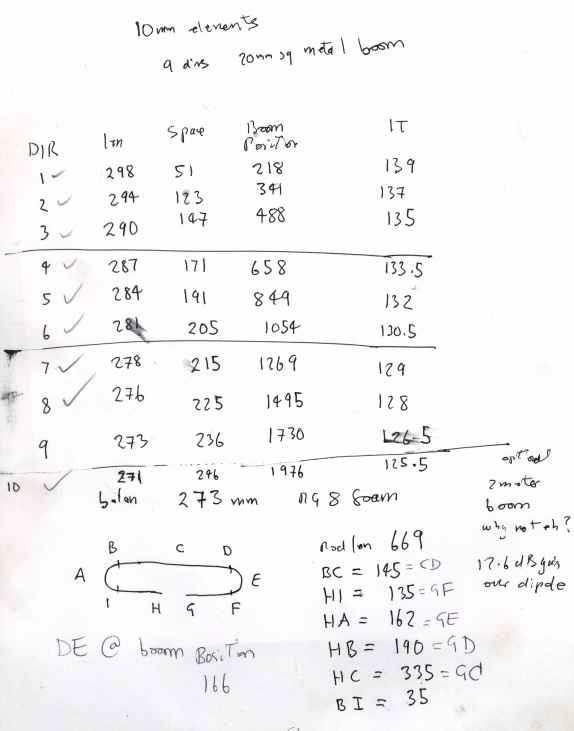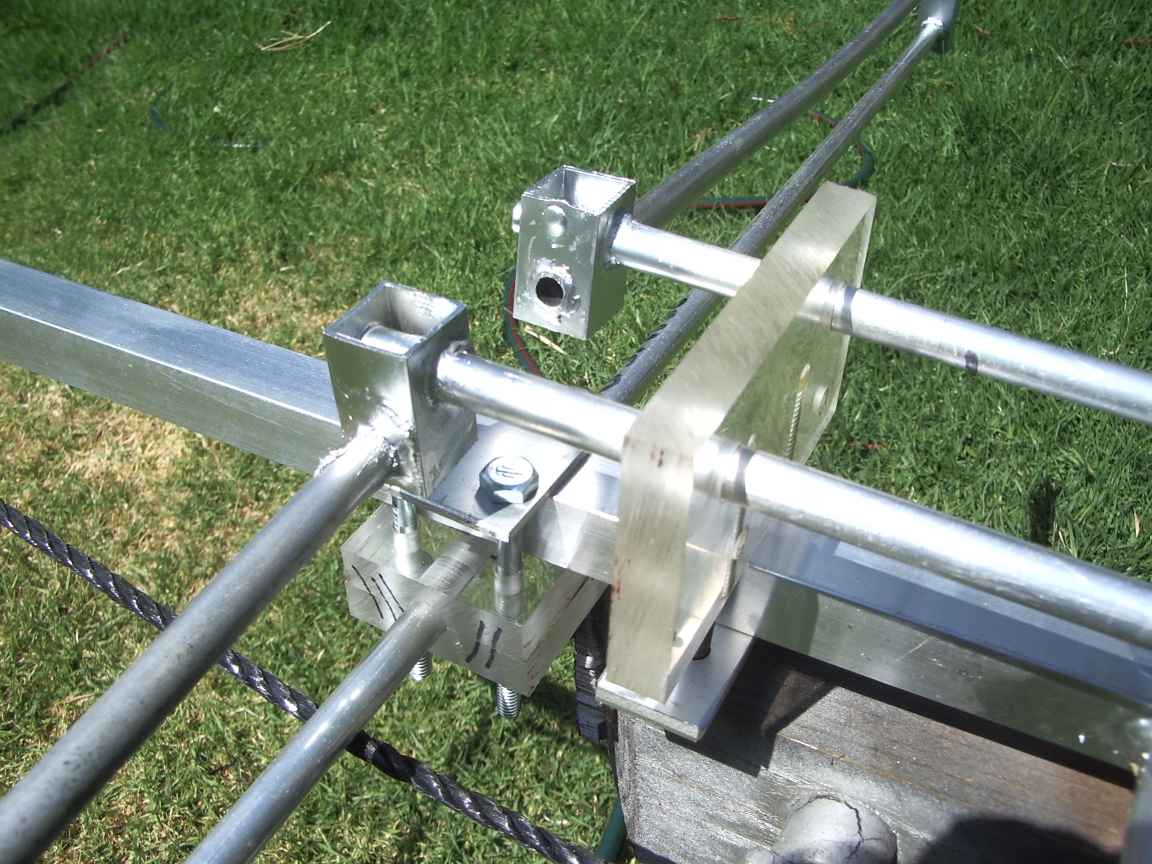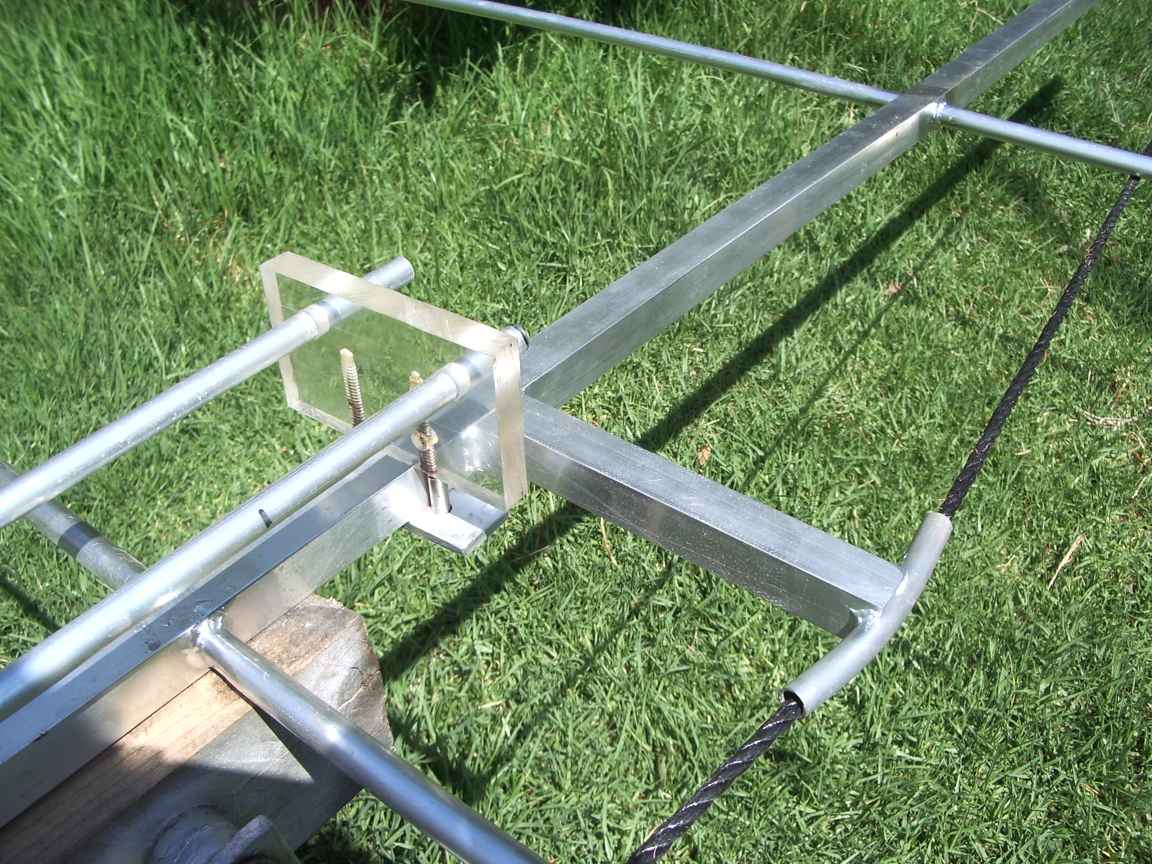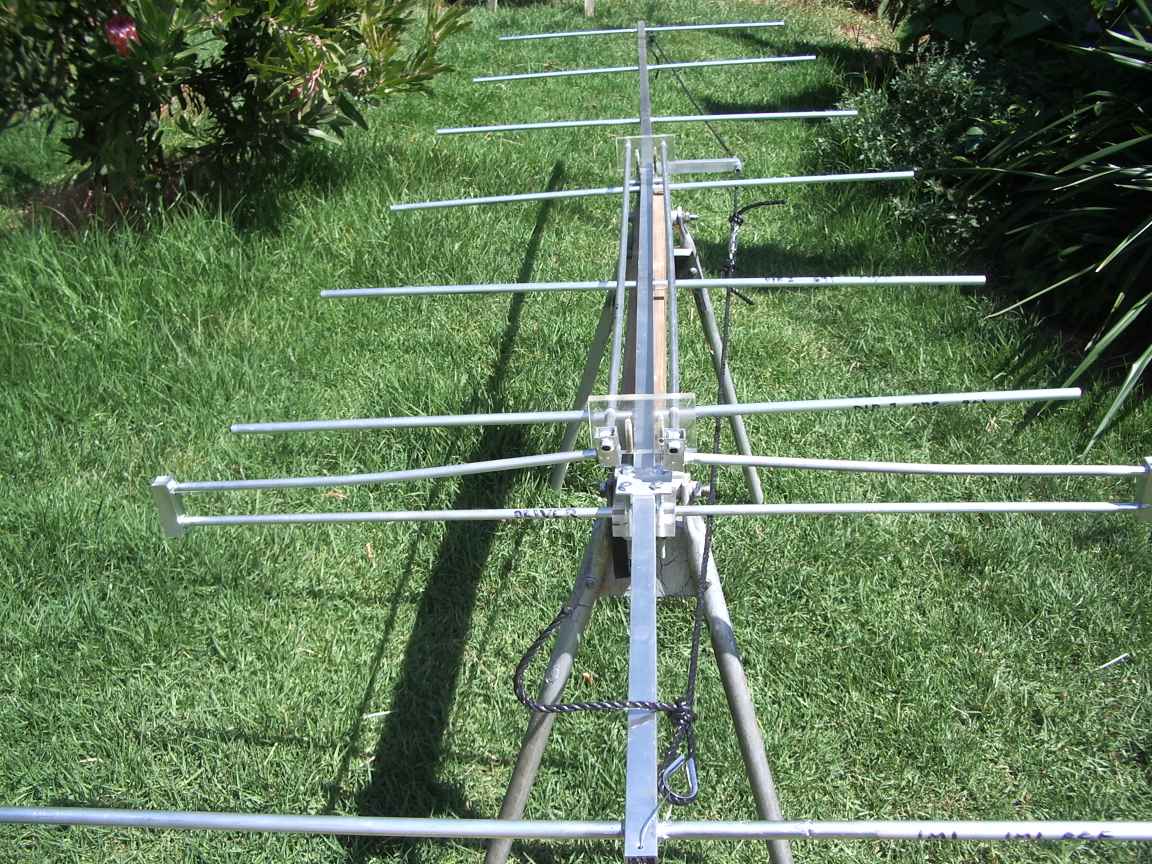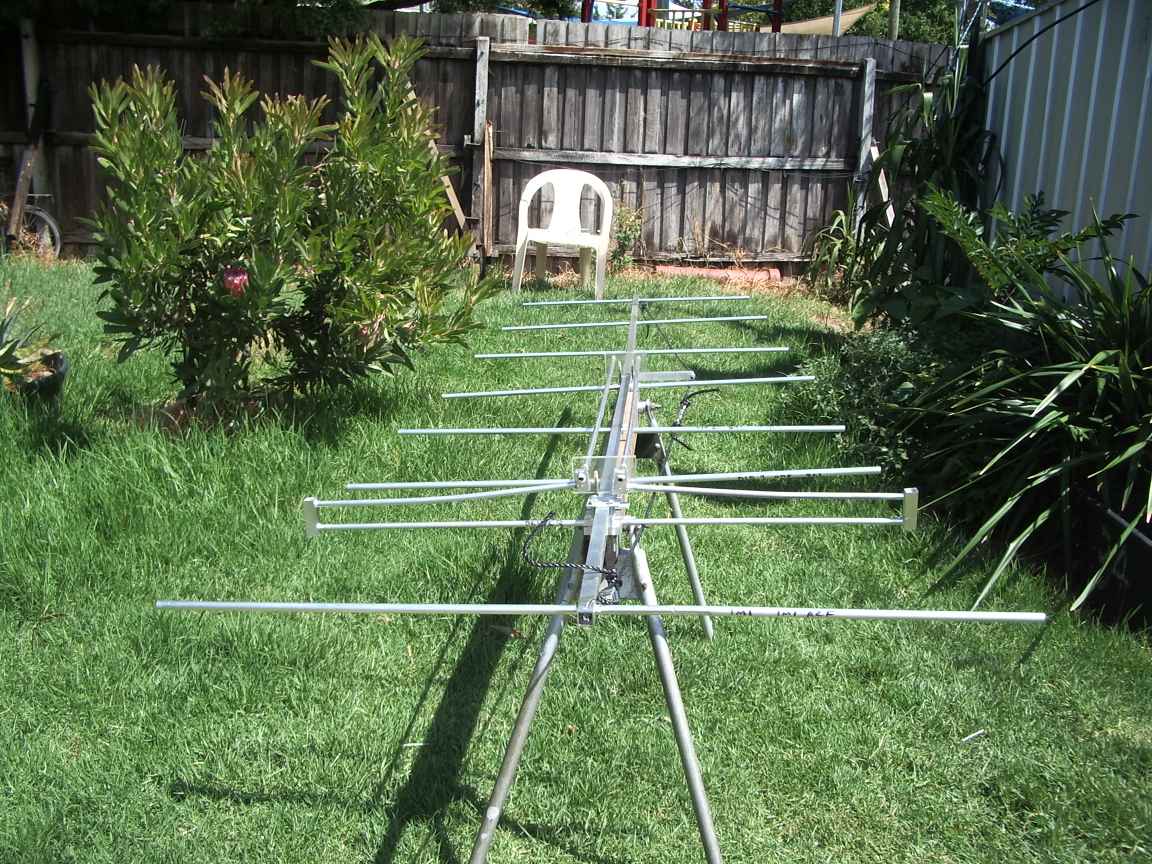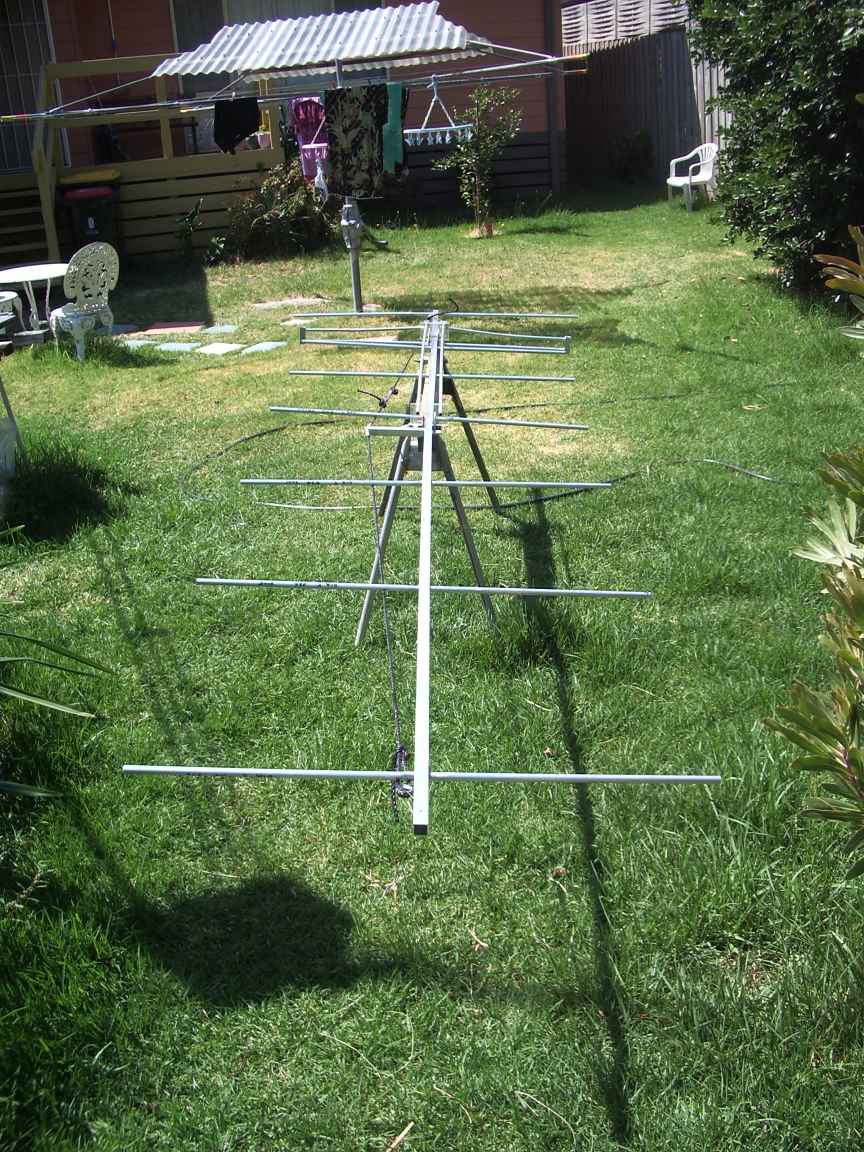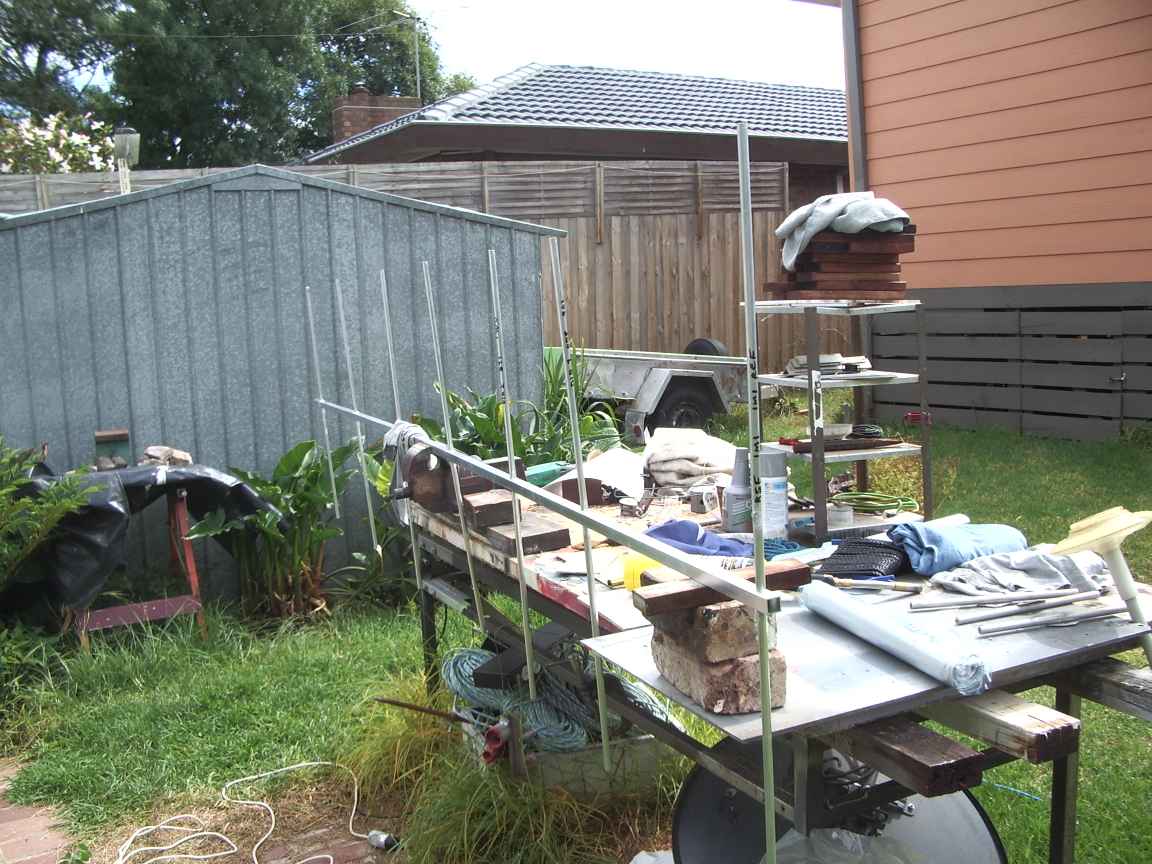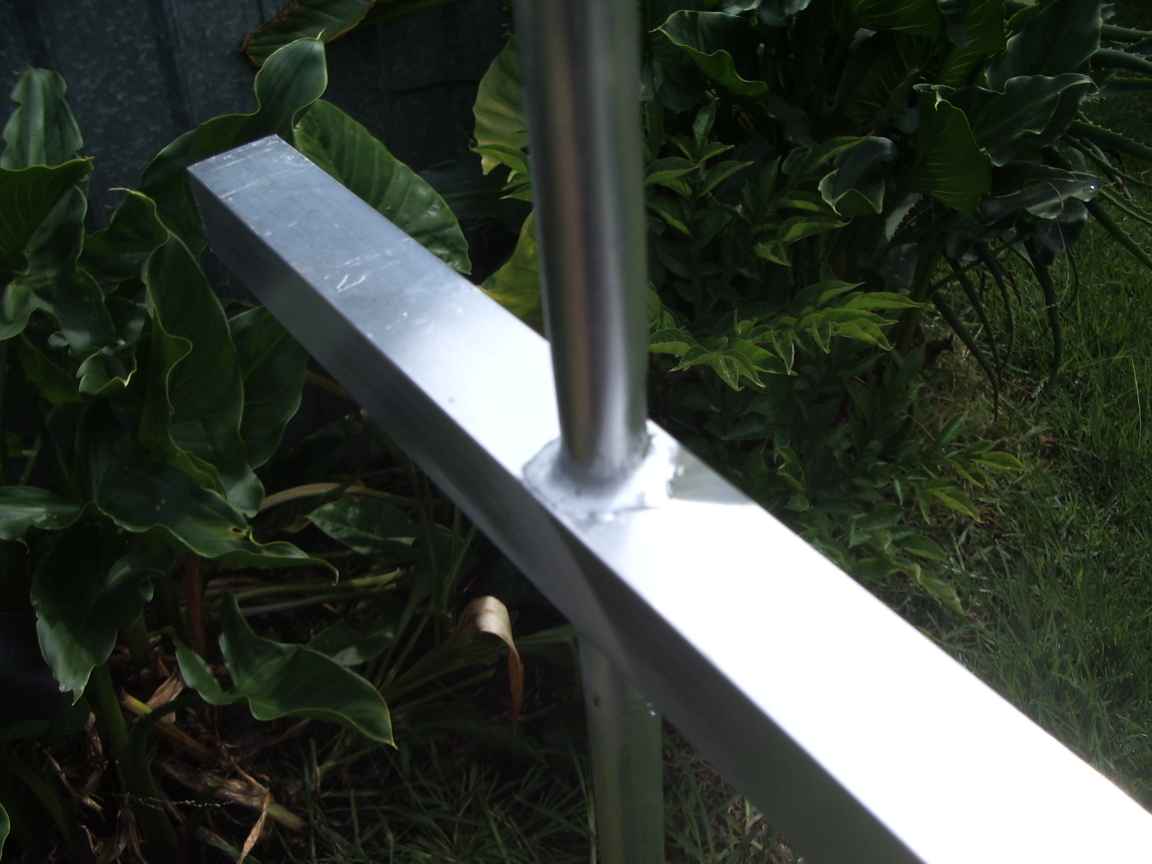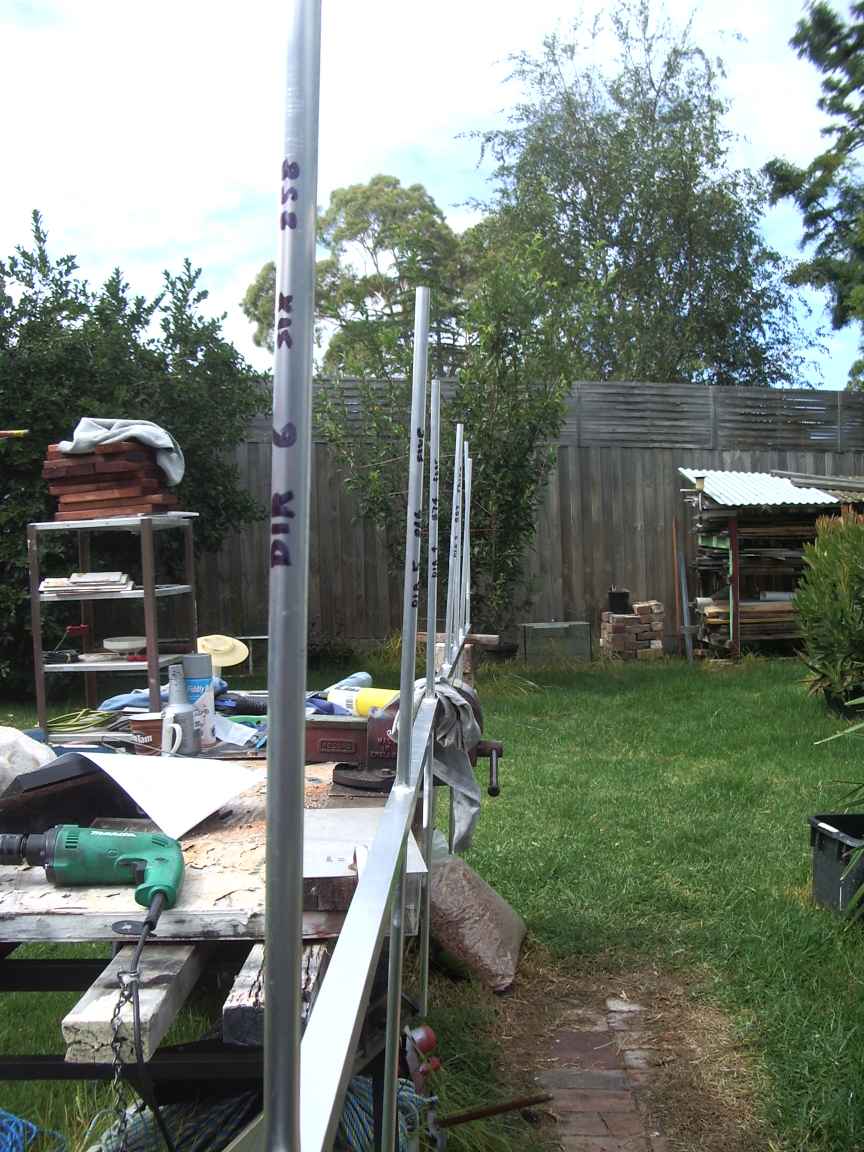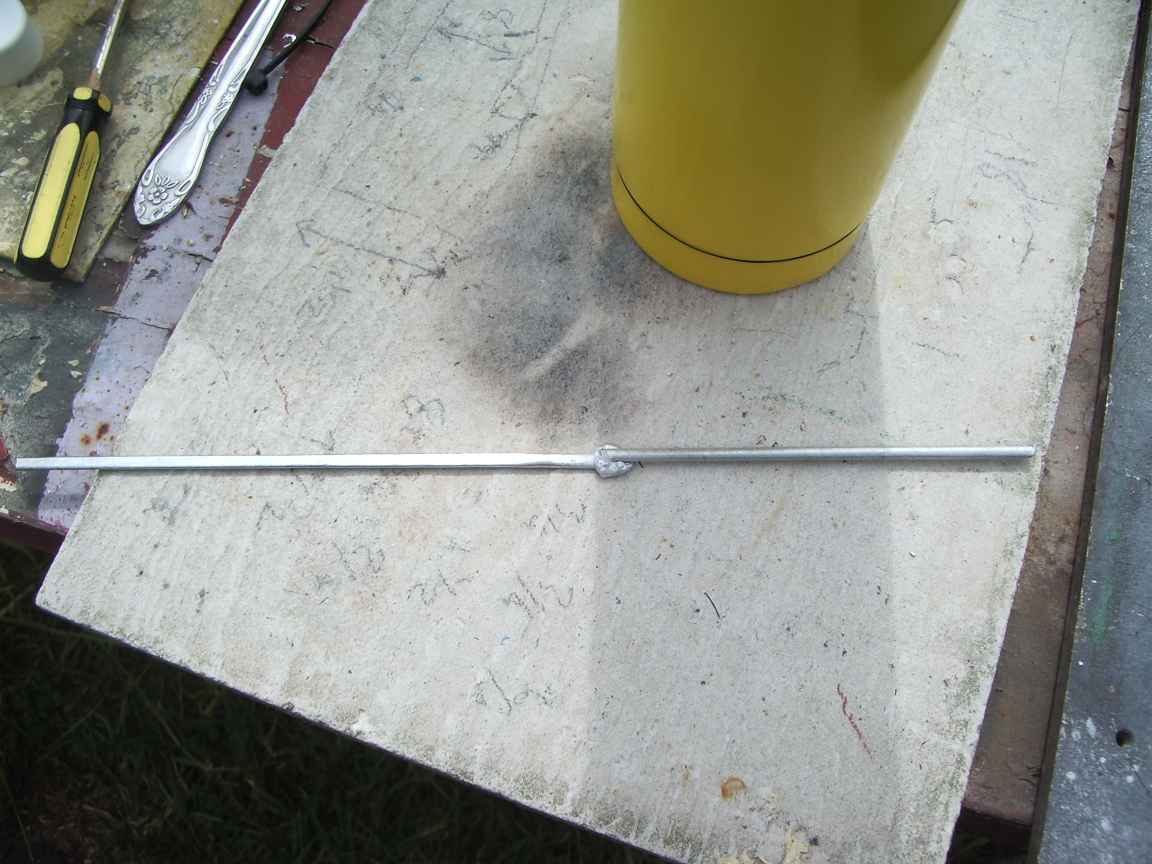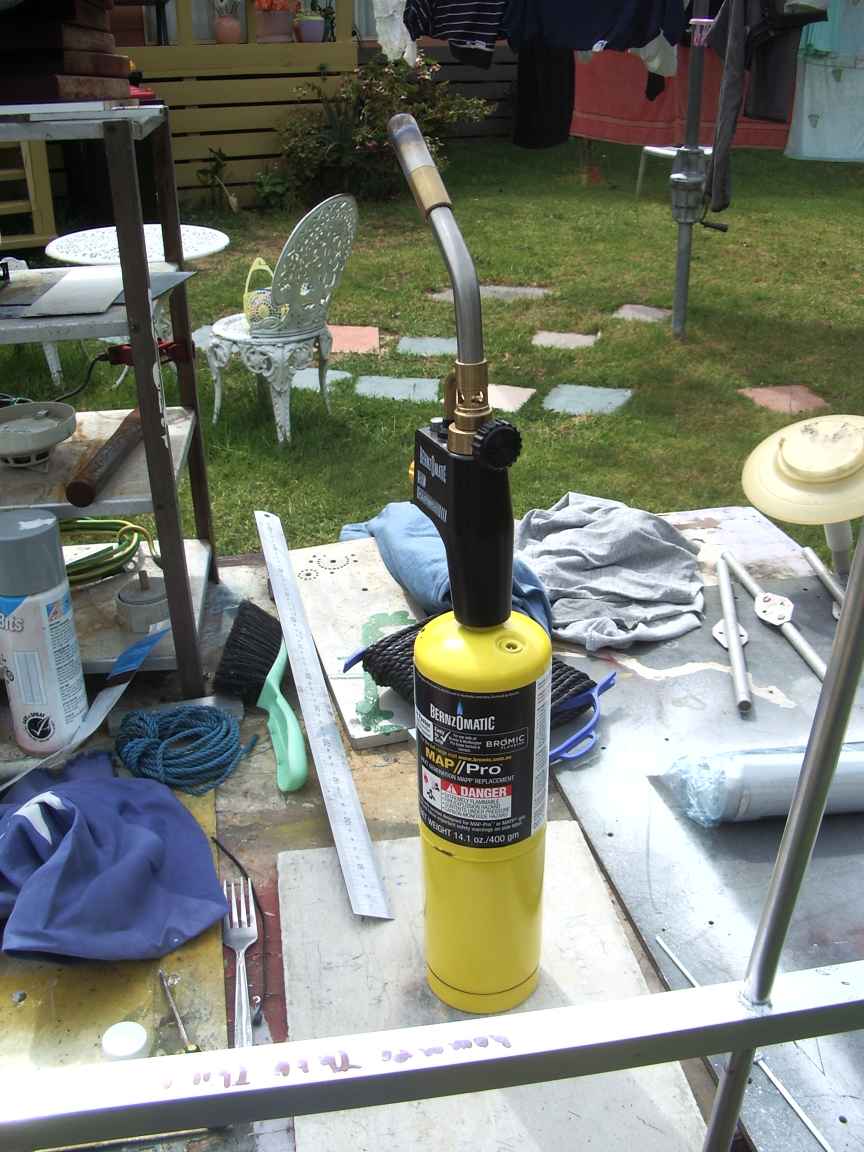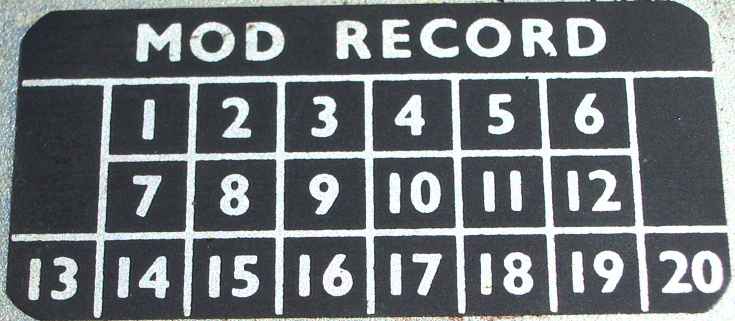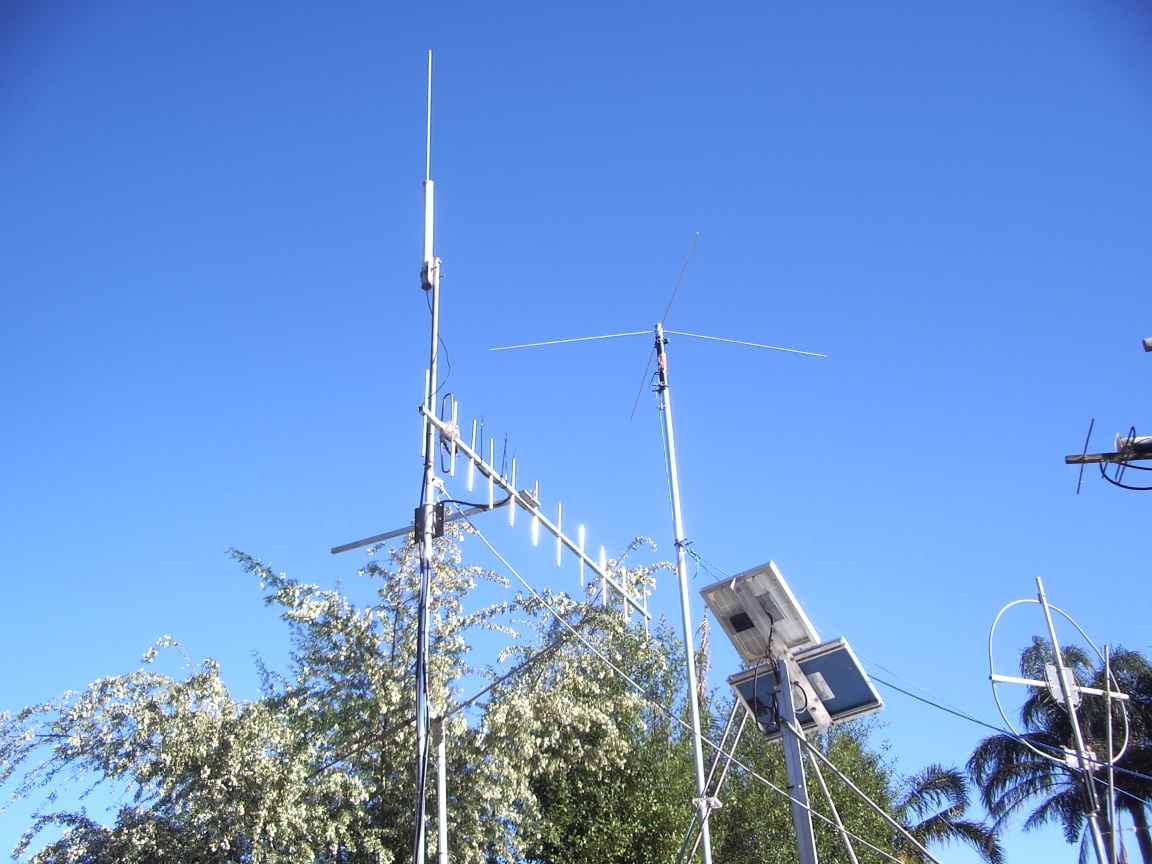
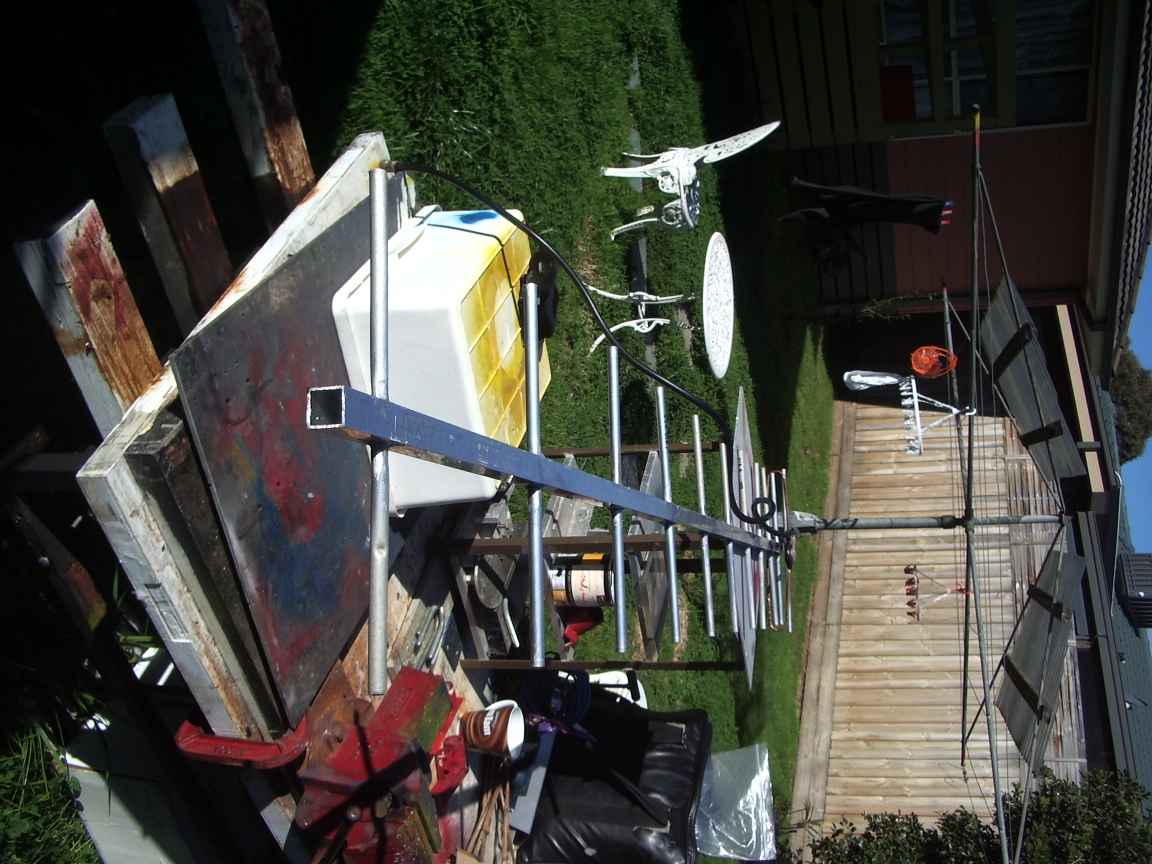
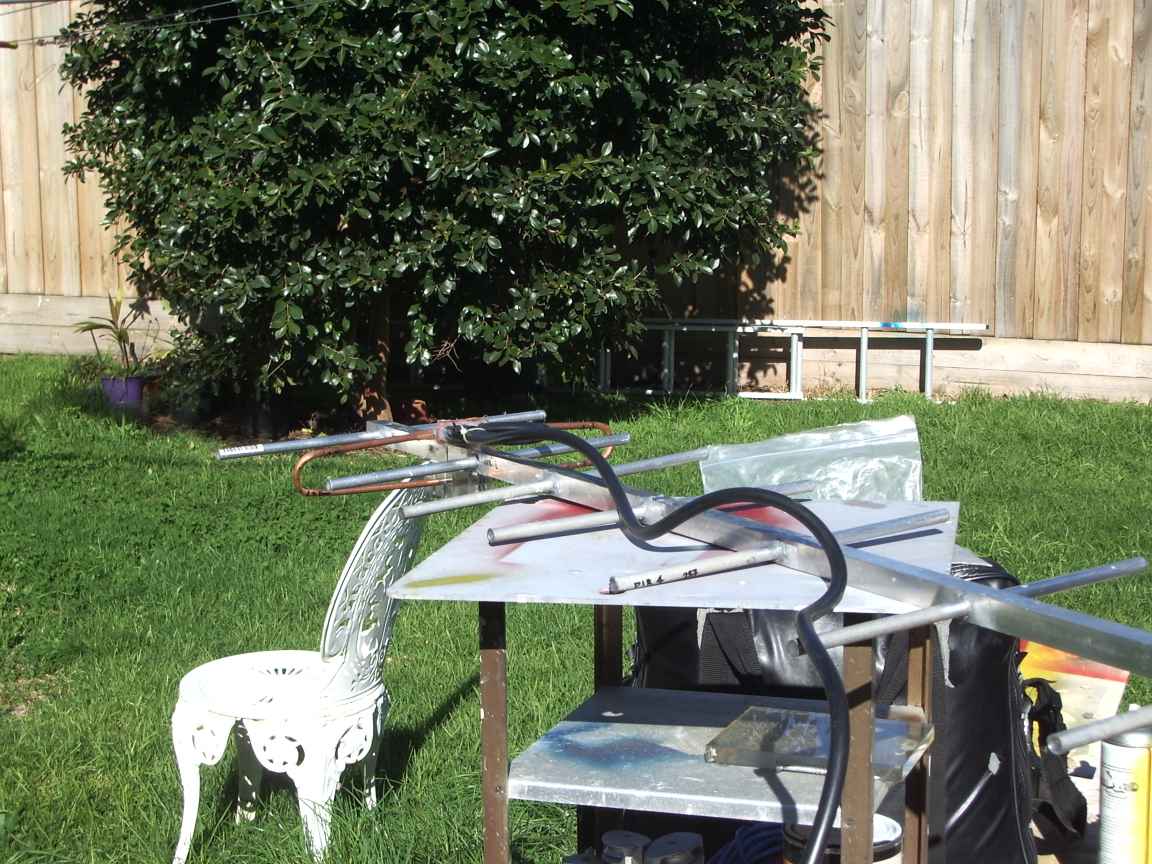
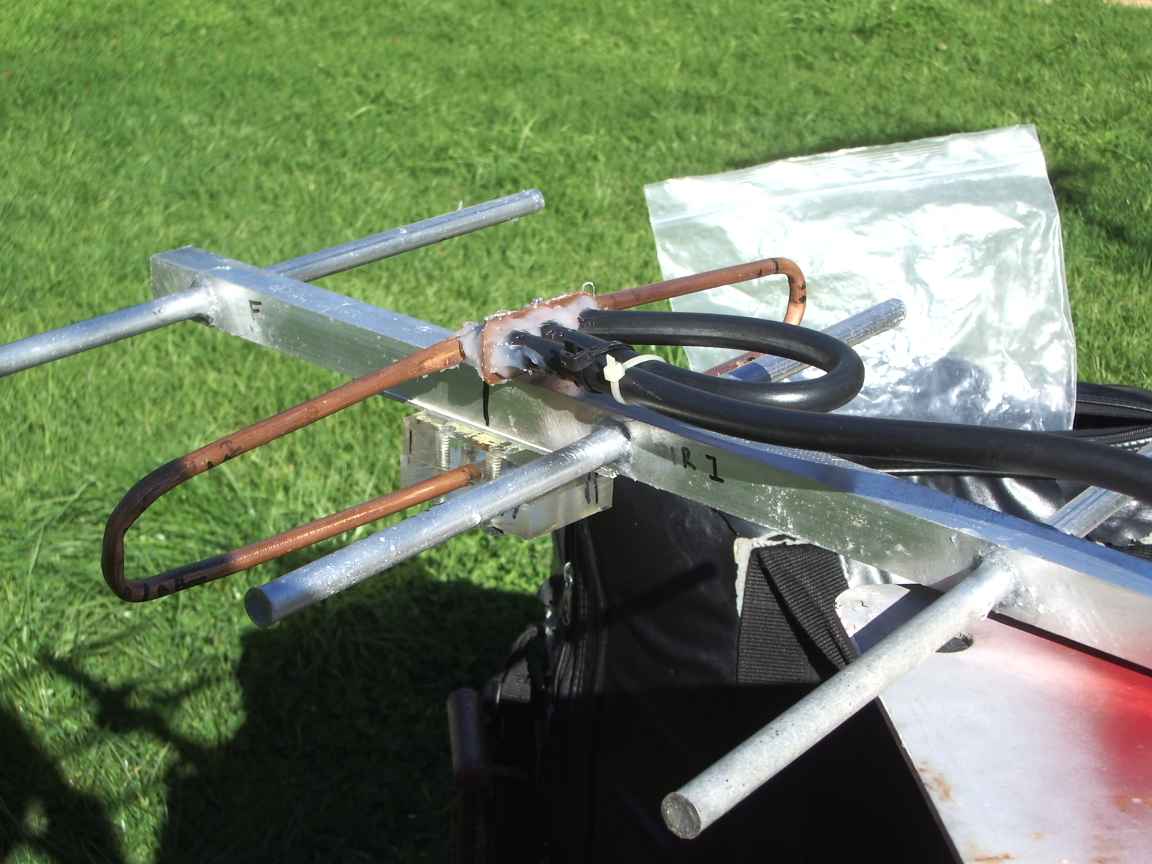
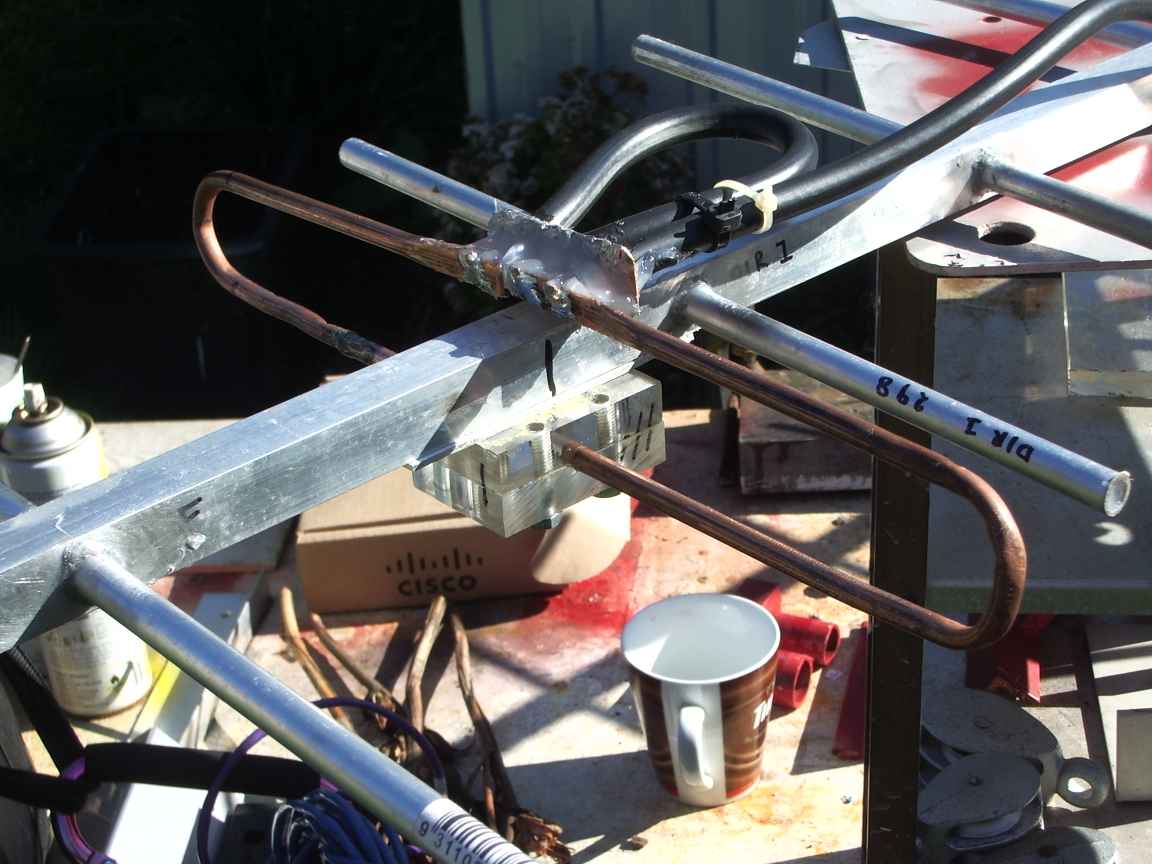
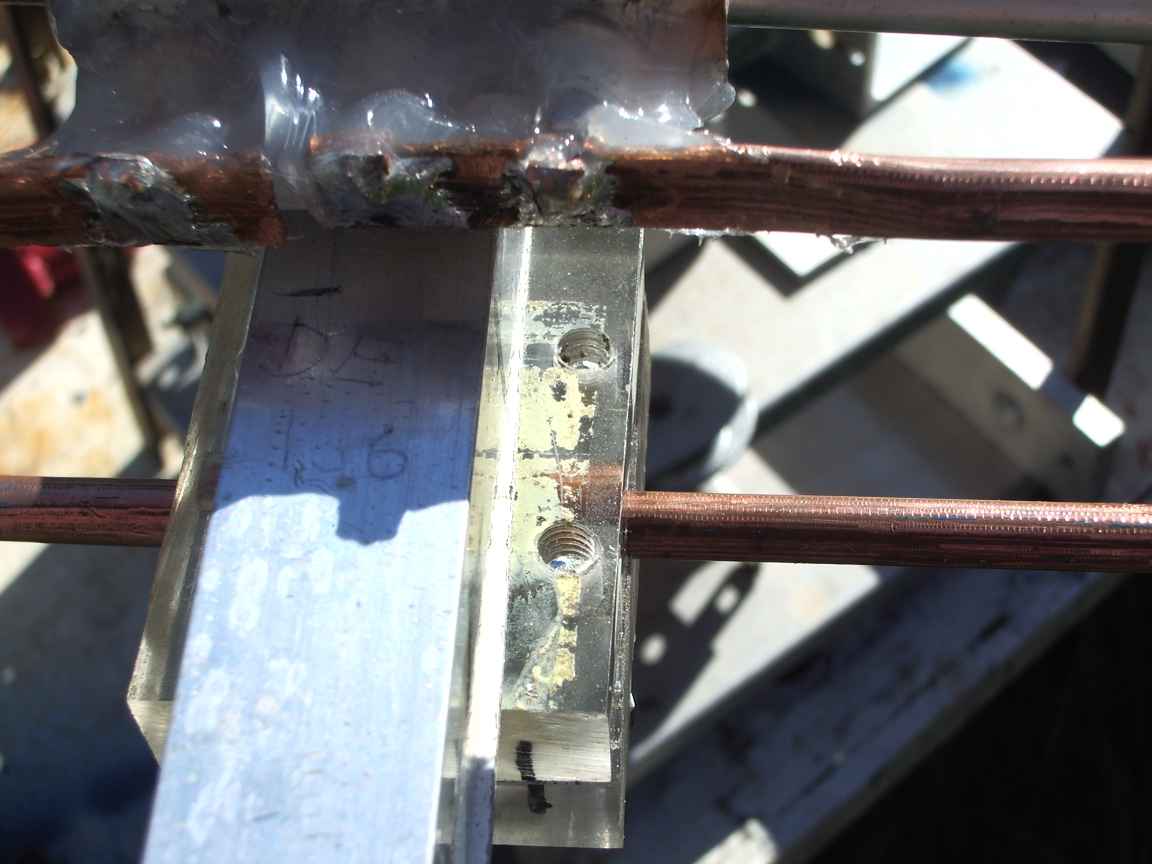
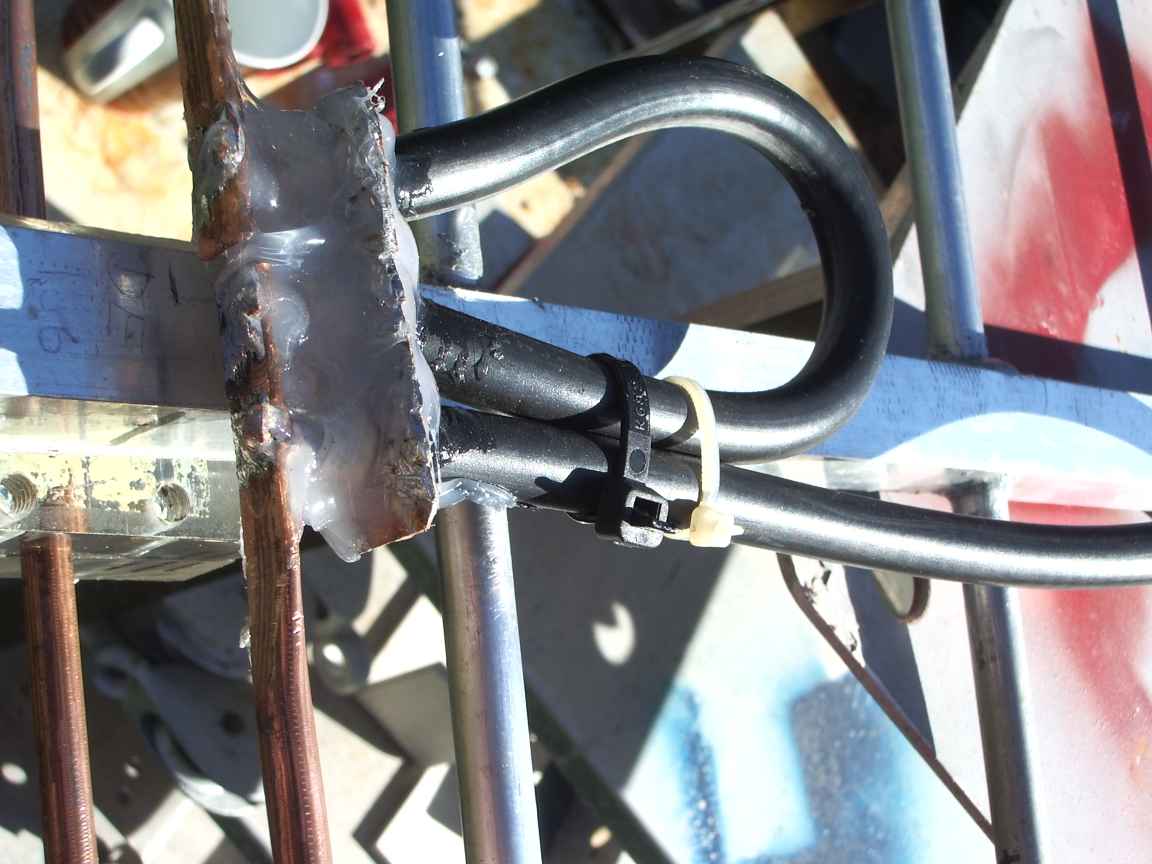
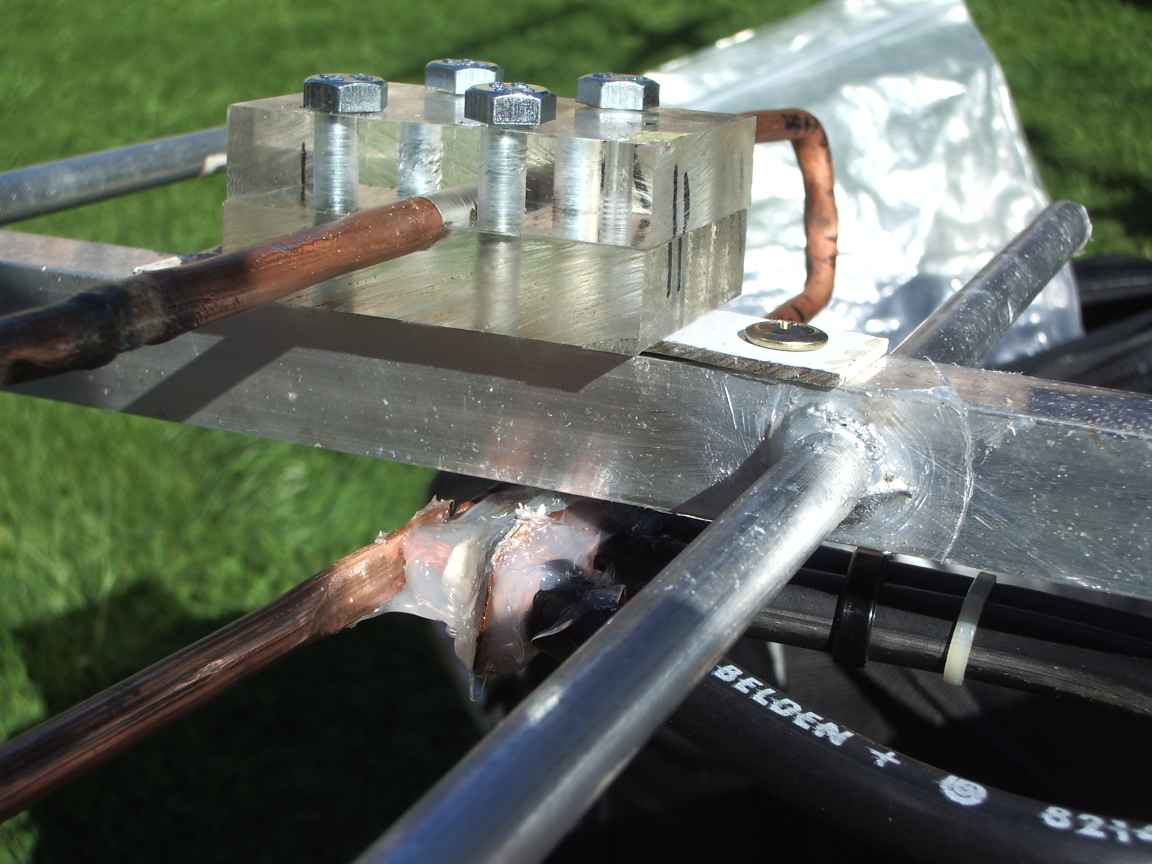
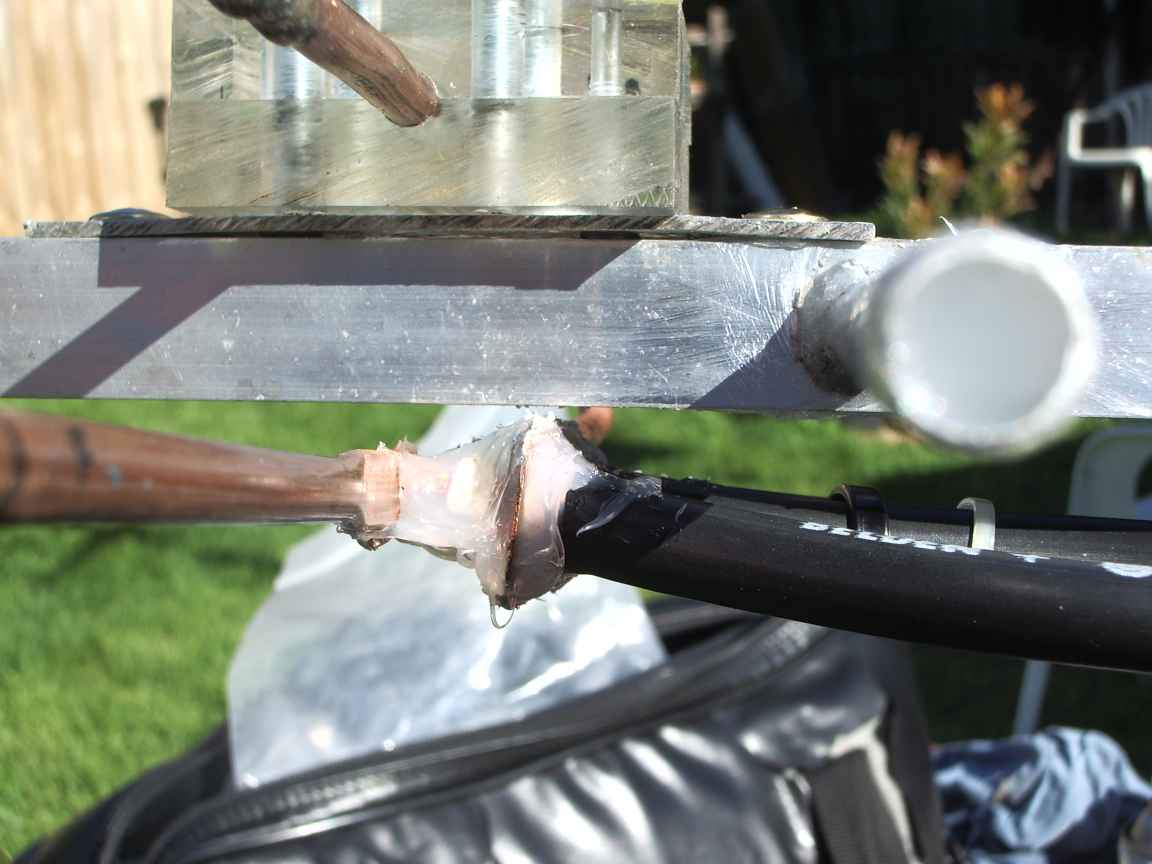
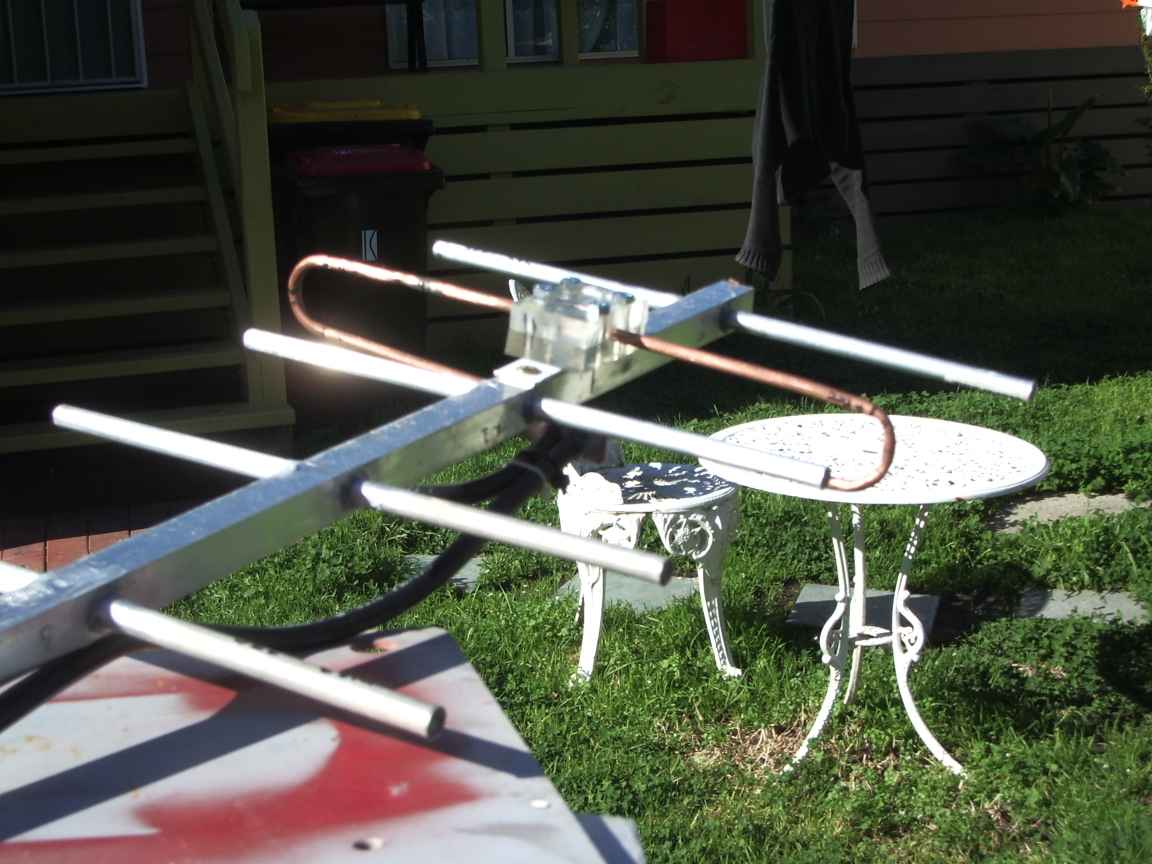
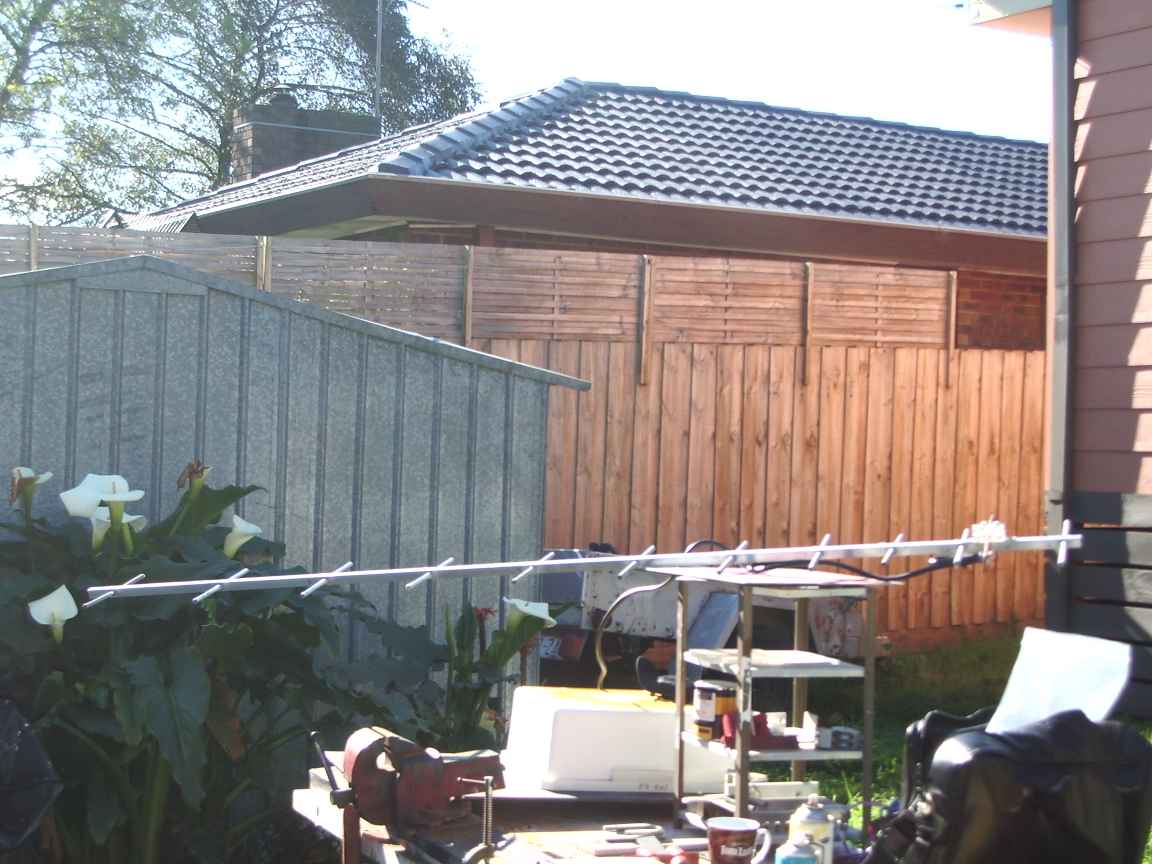
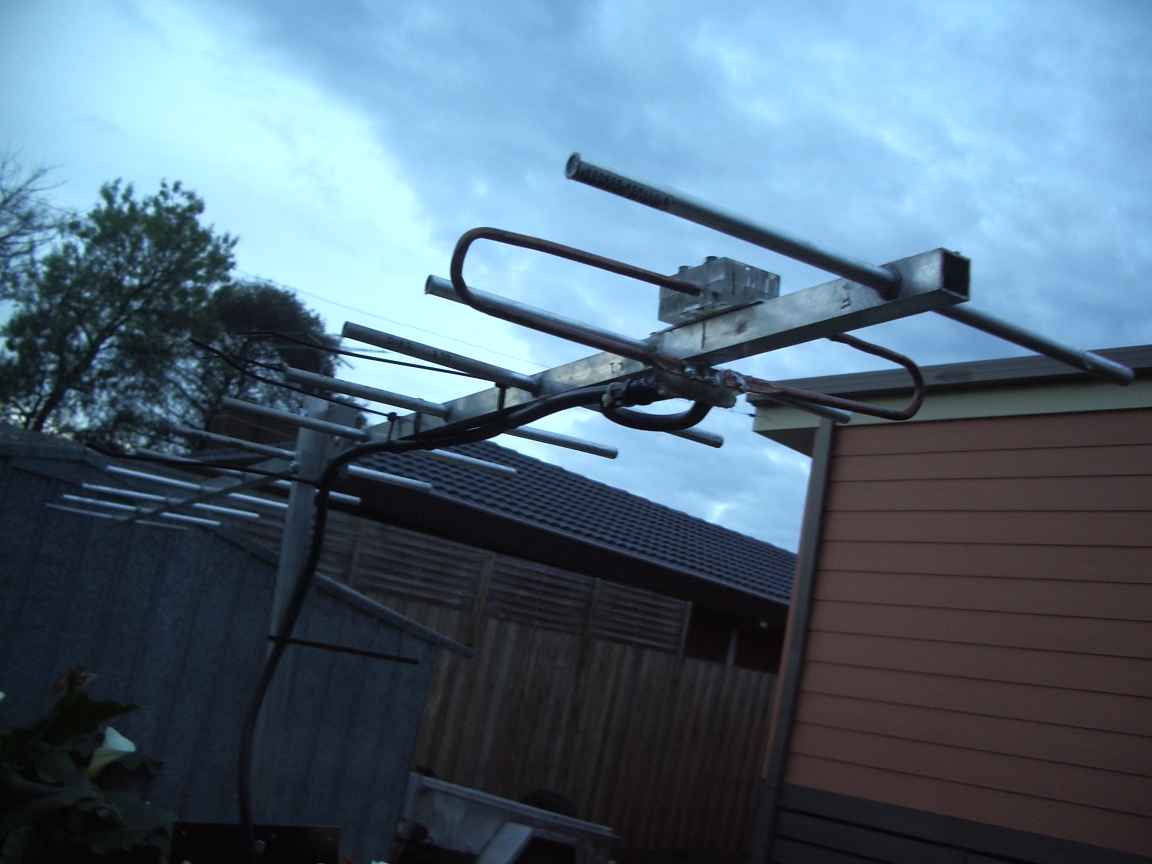
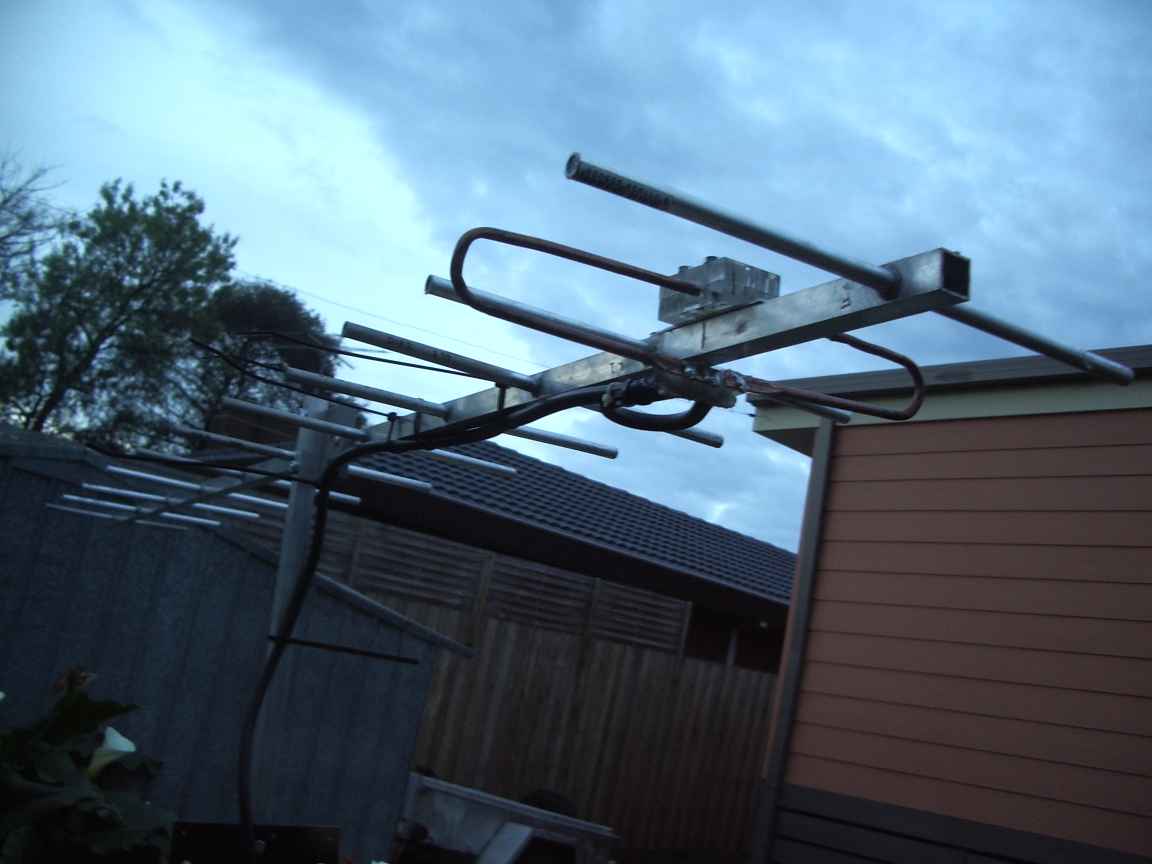
Construction notes
It is alleged that the dimensions are critical. This is probably true ! It is only true if the designed feed point impedance is to be achieved ! I have not added a universal stub. This may change if I wish to move away from my design frequency of 440 Mhz.
Use 20mm square extrusion for the boom. With Square section it is easy to drill a perfect perpendicular hole . Drill a 10mm hole for 10mm tube stock. This will make a sturdy interference fit . Gently tap the element into the boom. This force fit is ideal because when we braze the joint it will not move. Use a drill press to make the hole, a hand held drill makes a hole too big for an interference fit. Chamfer the end of the element before inserting it.
Measure twice, cut once ! Symmetry is important with a conducting element to boom joint. Measure, measure and just to be sure measure it again !
The element ends are sealed with silicone to prevent water and vermin ingress.
I used up all my ten year collection of 10mm tube offcuts I had been saving for a project just like this. The offcuts were quite
corroded , so clean them with steel wool or one of those new fangled stainless steel coarse scouring pads because we will be brazing this metal. It also helps along with the force fit.
The driven element is made from copper 1/4 inch hydraulic pipe. Do not ground it, it is not possible to find the true electrical center point of the driven element, so, let it find itself by mounting it in an insulator. It does not need to be grounded to the boom.
The coaxial balun is soldered directly to the driven element. Thats why I choose a copper element ! It is vital that you prevent water ingress into the coaxial cable, so be very generous with the silicone rubber. I recommend foam insulated cable for the balun. This will make the balun section slightly longer then solid di-electric coax which makes fabrication easier at 70cms. Take care soldering foam coax, it is easily destroyed by excessive heat.
The outer conductors of the coaxial balun and feed line was soldered directly to a piece of heavy copper flashing. This flashing does not have to be grounded to the boom. At low VHF we would do this, but at UHF it is too hard to find that true zero voltage ground point. Through holes were drilled through the flashing , using this tool, the braid splayed out and directly soldered to the flashing. blank PCB would also be suitable for this task.
The feed line is made from a section of heavy 50ohm foam dilectric coax and fitted with a silver type N plug to permit a directional coupler to be placed there for the testing and commissioning phase. Do not scrimp on this or think you can get away with it. Test the finished antenna while it is still on the ground on your bench. It is too late to do this when it is out of reach high up on your mightily impressive tower.
The force fit is quite reliable for mechanical purposes but is useless for RF currents. This joint is a high current point and every dB is precious ! The joint must be brazed to create a true metallic bond. See also howto solder to aluminum.
Here I have used just a propane torch and Benzomatic Aluminum Brazing rod. ( Durafix and Alumalloy are the same product ) I had to wrap the nearby boom section with rag to give it a bit of thermal insulation because the propane torch puts outs only just barely the required heat. This rag may catch fire, so do this procedure out of doors. Do not do this with any ambient wind or it will too readily conduct the heat away before we get to brazing temperature.
Indelibly Mark your measurements on the boom with a scriber so they do not rub off whilst under construction.
Indelibly Mark your precut elements with length and element number. It is amazingly easy to confuse yourself as they all look the same !
The braze metal being a ternary alloy will quickly corrode under atmospheric conditions, so protect it with a smear of silicone rubber.
The best silicone rubber to use for full sun and atmospheric exposure is the heavy glazing/guttering grade with the acid cure. Yes, that is ACID cure. The acid is only acetic acid which is not actually that corrosive to metal. However the rubber will give you at least 25 years service in the full Australian sun...that IS impressive. (Been there, done that !)
The driven element insulator was made by securely clamping two pieces of perspex and drilling the hole straight down through the join. Have you got a cheap drill press ? No ? Get one! This wont work with just a hand drill. You cannot drill an interference fit in the boom with a handheld drill.
